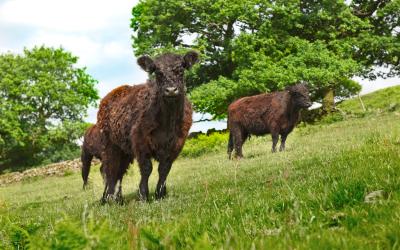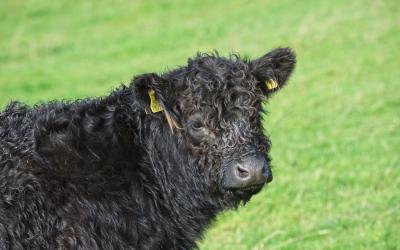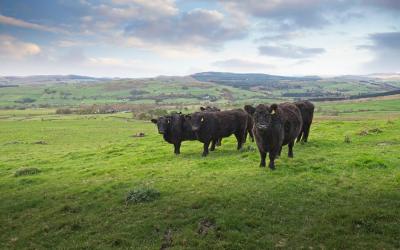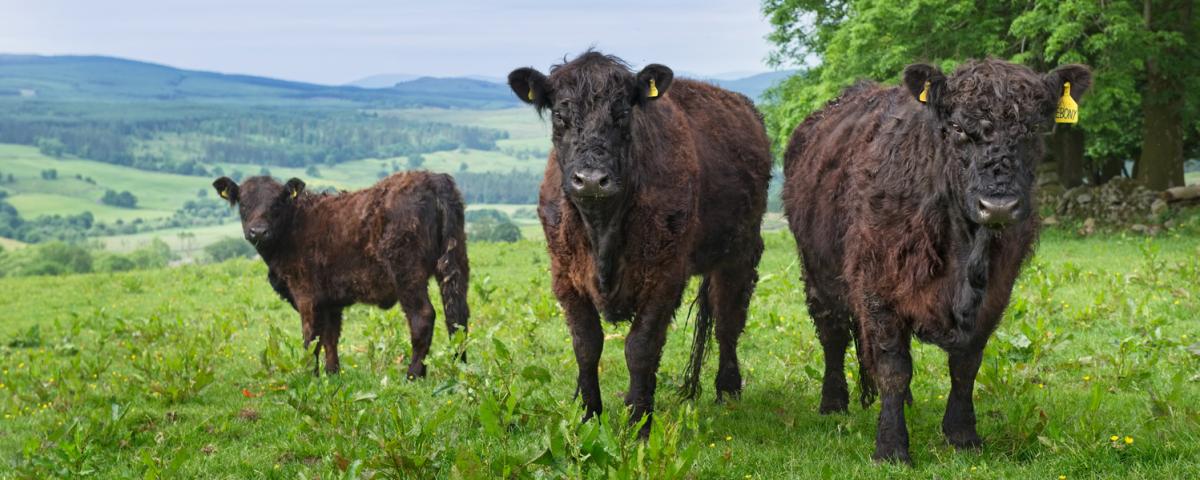Galloways are well known as conservation grazers; where livestock grazing promotes and enables rich biodiversity. On hill and upland pastures the unselective grazing action of the Galloway improves the natural herbage for domestic stock, wildlife, and game through the removal of excess roughage.
Mixed farming – both cattle and sheep - delivers a number of environmental benefits. This is because grazing techniques in cattle vary considerably from sheep, so their grazing patterns complement each other as well as benefitting the flora and fauna.
There is a growing understanding amongst farmers and conservation bodies of the role cattle can play in benefiting the local landscape and habitats, particularly native breed cattle like the Galloway. Land benefits significantly from having cattle to help manage rough grazing, often on marginal land. Galloway cattle are less selective grazers than sheep and can favour certain vegetation special to certain sites, which includes areas of land designated as Special Scientific Interest (SSSI).
The heavier weight of cattle can have a positive impact on bracken and low scrub, breaking up mats of dead litter and creating pathways through tall dense vegetation. The cattle can also create more ground disturbance and benefit tree seedlings by burying them into the ground. Stocking animals such as the Galloway benefits not only livestock and habitats, but also produces nutritious, sustainably produced red meat from animals reared on varied pasture diets.





